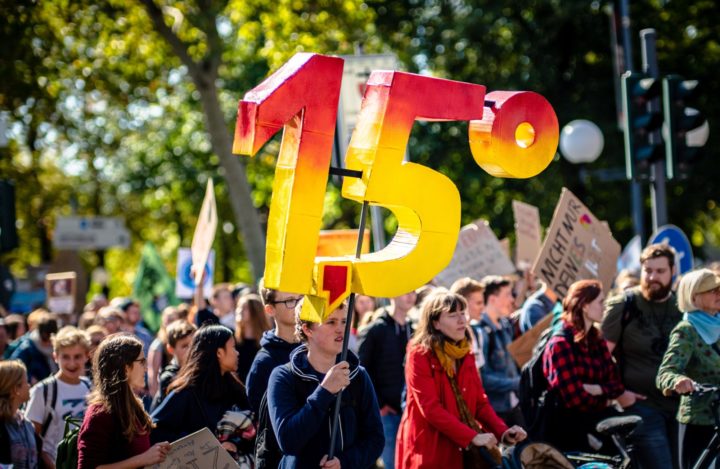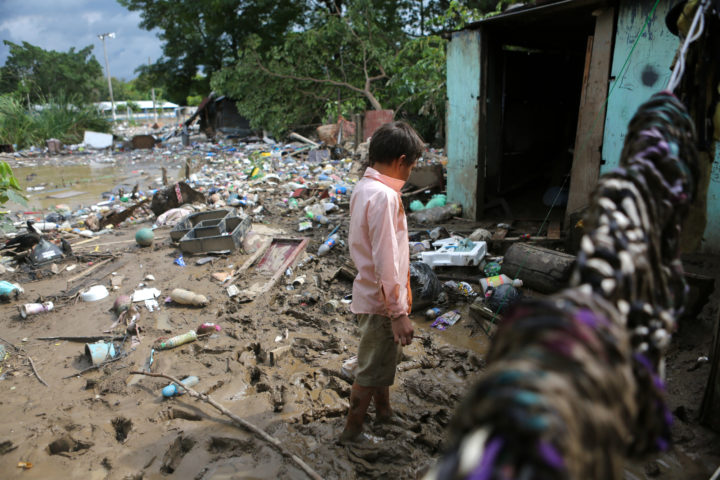COP26 expectations: what could success in Glasgow look like?
Ahead of UN climate talks opening in Glasgow, we look at expectations of COP26 - what success could look like, to keep the Paris Agreement goals within reach and build momentum beyond Glasgow.

By Gareth Redmond-King
@gredmond76Share
Last updated:
For two weeks in November, part of Glasgow becomes international territory for the United Nations climate summit – COP26. But what is COP for, and what can we expect to come out of Glasgow?
Six years ago, in 2015, the 21st conference of the parties (COP21) was hosted in France. After years of false starts and missed opportunities, this delivered the Paris Agreement. A landmark global treaty committing nearly 200 signatory nations and blocs to keeping global temperature rises to well below 2°C – and aiming for 1.5°C. It also included commitments to increase capacity to adapt to climate impacts, and to getting finance flows consistent with efforts to do both.
Glasgow won’t feel quite like Paris; there won’t be one overall package that signals success. Rather, what the world is looking for COP26 to do is to keep the Paris Agreement goals within reach – to close gaps and build momentum beyond Glasgow, into this critical decade for climate action. That means making progress across a range of areas.

1. Closing gaps
On emissions
As of September 2021, nationally determined contributions (NDCs – countries’ emissions pledges) did not add up to that 1.5°C ambition – nor even to well-below 2°C. We’re currently on track for 2.7°C.
Leaders of G20 nations meet just before COP; many are big emitters and too many still have weak targets and no commitment to the Paris goal of net zero emissions by mid-century. Wealthy, coal-exporting Australia, with one of the highest per-capita emissions on the planet, fossil-fuel rich Russia and Saudi Arabia, and deforestation-happy Brazil have all failed to step up ambition – yet. China, whilst it has made several important commitments to peak coal and emissions this decade and get to net zero by 2060, had – as of mid-October – not yet submitted a new NDC for 2030. Nor had India.
This is the biggest gap where progress is needed. Narrowing that gap will make it easier for the Glasgow meeting itself to focus on how to move things faster afterwards – including revisiting and revising NDCs more frequently, and pushing more rigorously for 1.5° alignment.
On finance
As of mid-October 2021, wealthy nations have not yet provided the $100bn a year for developing countries they promised by 2020. The gap has closed thanks to recent pledges – two of which quadrupled their promises: New Zealand (to $230m) and the US (which has twice this year doubled its commitments, now to $11.4bn a year).
But just days out from COP, a report for the UK presidency prepared by Canada and Germany shows that the $100bn goal will not be met this year - that it may be met in 2022, but that it could be surpassed in 2023 and beyond, to make up at least part of the shortfall arising from delay. The plan expects that $500bn will be delivered over the five years.
Poorer nations need this to afford adaptation and emissions cuts. But, as a long-standing promise made by wealthy nations to developing ones, it is also important for trust in the negotiations. It remains to be seen whether enough progress has been made, and whether more can be done in Glasgow to move this issue on – including to begin the process of negotiating the total upwards beyond 2025.

On adaptation, and loss and damage
As we head into COP26, adaptation remains largely unaddressed, as does support for developing nations’ loss and damage caused by climate impacts.
All parties to the Paris Agreement need to frame commitments that will add up to the global goal on adaptation to which Paris commits them. But more pressingly, developing countries vulnerable to climate impacts need more help from the rest of the world to adapt to climate impacts (such as sea-level rise and extreme weather), as well as to cope with and pay for loss and damage caused by those impacts.
As with climate finance, so with these areas: there is genuine need for the assistance; but greater support and formalising these as core areas for the work of future COPs are also crucial to trust in the process. For loss and damage, this means including it on formal COP agendas and in the 2023 global stocktake on progress. But it also means operationalising technical assistance promises made to developing countries, as well as a political agreement to acknowledge the need, very soon, for a dedicated stream of finance to help pay for loss and damage.
2. The Paris Rulebook.
This is the most technical bit – detailed negotiations on the mechanics of the Paris Agreement. The last two COPs failed to land agreement on remaining areas, leaving three issues outstanding: the rules and mechanisms for trading emissions cuts between them to manage delivery of their NDCs; an agreed common timeframe for all NDCs to span (broadly five or ten years); and rules on transparency to ensure nations are not cheating their emissions reporting. All need resolving.
Timeframes and transparency are important for driving ambition (shorter timeframes and maximum transparency). But the carbon trading – article six of the Paris Agreement – is the most contested area. In Katowice and Madrid, the maxim became ‘better no deal than a bad deal’ as some countries sought to water down rules to make their targets easier to meet, or even just block progress completely.
For the sense of forging ahead with closed gaps and deals for real-world action to cut emissions, it will be important to tie up these loose ends. Not least as there are plenty of other issues that need negotiators’ time and attention – including ramping up future climate finance. But that maxim of avoiding a bad deal that undercuts emissions pledges will likely still hold, and may yet prevent resolution on article six.

3. Sector deals to cut emissions
Outside of formal negotiations, nations are coming together in coalitions for real-world emissions cutting action. These will focus on coal phase out, ending deforestation, speeding up the demise of petrol/diesel-fuelled cars, cutting methane and ending fossil fuel finance. The UK Presidency, with other leaders, has been working to build these ahead of COP. We can expect announcements during COP, with leading nations seeking to sign up more members. Progress here – perhaps particularly on methane (its potency as a greenhouse gas meaning that rapid cuts this decade could avert 0.3°C of warming) – can be crucial to keeping 1.5° within reach.
Momentum
For COP26 to keep the Paris goals within reach, there is no well-defined finishing line that will be crossed at Glasgow. Nor is there a clear equation that we can total up at the end.
If COP26 is successful, it will involve progress across each of these areas, a palpable sense of trust that the wealthy nations are support developing nations, and a focus on the job to do at COP27 – not on what went wrong at COP26.
We should not forget how far we have come since Paris, and how much momentum there already is towards net-zero. Nor that action in the real world has often moved faster than national emissions pledges, meaning that some countries’ existing policies will cut emissions faster than they have promised. All of which means that the real test of success at Glasgow may well be whether there is more momentum after COP26 than there was before.
Share